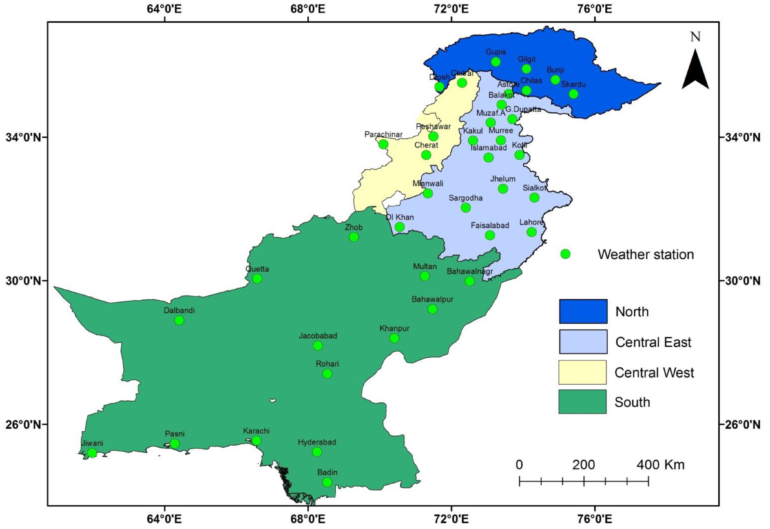From June to October 2022, Pakistan was hit by devastating floods that displaced more than 30 million people and caused damages amounting to around US$15 billion. Unfortunately, that was not an isolated calamity—droughts were a major source of concern just a few months before the monsoon flooding. What is causing this sequence of extreme events?
A team of scientists from Pakistan, U.S., Switzerland, and Singapore has shown that the cause of such phenomena is the intensification of the hydrological cycle, which increases the frequency of droughts and floods.
Scientific evidence in support of this hypothesis is provided by tree rings, which “record” the duration and intensity of past climate conditions. Using data from the Hindu Kush Mountains, the scientists were able to reconstruct annual precipitation in the Kabul River Basin (see above) over a period of almost four centuries spanning from 1637 to 2018.
“Our precipitation data show alarming trends,” shared Dr. Nguyen, the corresponding author (Columbia University). “By looking at trends in the past four centuries, we clearly see that droughts are getting more severe, shorter, and more frequent, interspersed with more frequent wet periods.”
Floods and droughts are not mutually exclusive; they are a feature of natural hydro-climatological variability. In a warmer climate, though, the rate and intensity with which these phenomena manifest themselves is likely to increase—as we are witnessing in central Asia.
“The consequences for the management of natural resources are vast,” added Dr. Galelli, co-author from the Singapore University of Technology and Design. “The hydrological cycle affects multiple socio-economic sectors, so we need to re-think our approach to infrastructure planning and operations. What we are starting to witness is a profound need for climate adaptation and mitigation.”
The findings of the study were published in Geophysical Research Letters and presented at the American Geophysical Union Fall Meeting in December 2022.
More information:
Nasrullah Khan et al, Increasing Drought Risks Over the Past Four Centuries Amidst Projected Flood Intensification in the Kabul River Basin (Afghanistan and Pakistan)—Evidence From Tree Rings, Geophysical Research Letters (2022). DOI: 10.1029/2022GL100703
Provided by
Singapore University of Technology and Design
Citation:
400 years of rainfall patterns suggest increase in extreme weather conditions in Pakistan and Afghanistan (2023, January 31)


